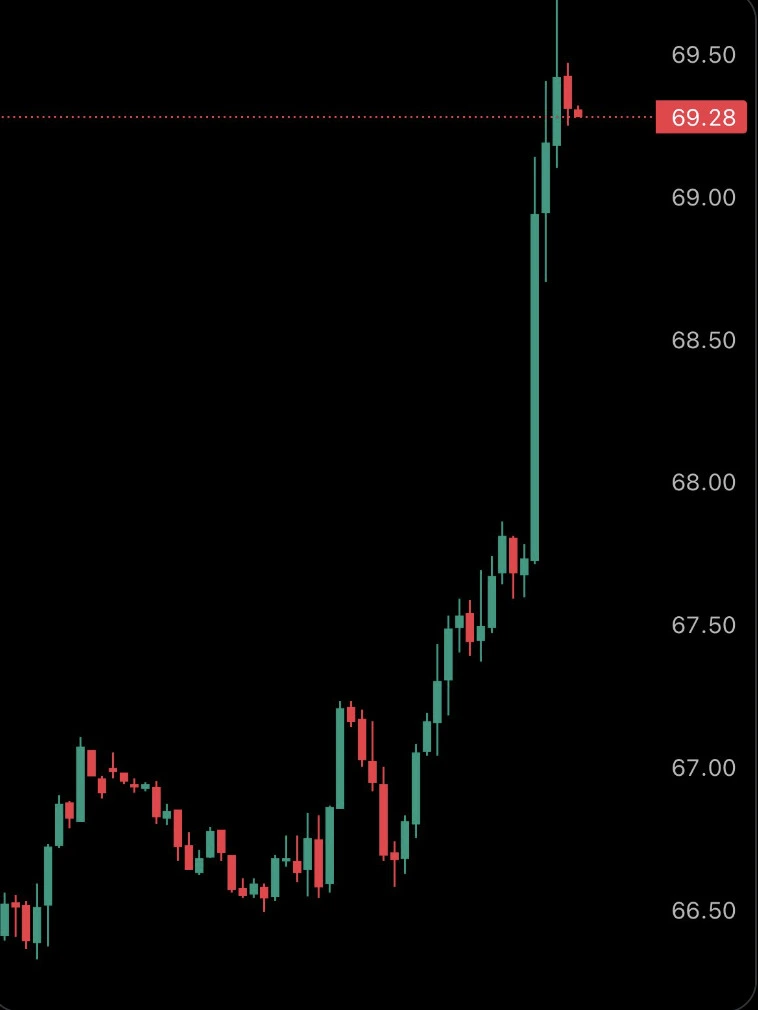Oil prices waver amidst tensions and inventories
Oil prices waver amidst tensions and inventories
Oil prices waver amidst tensions and inventories

In a dramatic turn of events, oil markets find themselves caught in a tug-of-war between escalating geopolitical pressures and underwhelming market fundamentals. This conflict has created a volatile trading environment where prices are responding more to potential future disruptions than current market realities.
Geopolitical tensions drive oil prices higher despite market surplus
The oil market has witnessed a significant rally recently, primarily fuelled by heightened geopolitical concerns. Former US President Donald Trump's recent ultimatum to Russia—giving Moscow just 10 days to make progress on a Ukraine ceasefire or face new economic sanctions—sent shockwaves through energy markets. Trump's additional threat of imposing 100% tariffs on nations continuing to purchase Russian oil particularly alarmed traders, triggering nearly a 4% price surge in a single session.

This sharp reaction reflects growing concerns that approximately 2 million barrels of daily Russian exports could potentially be disrupted if major importers like India reconsider their purchasing strategies. While China would likely maintain its Russian oil imports despite potential penalties, the overall market impact remains significant.
Fundamental indicators point to oversupply concerns for crude oil inventories
Despite the price rally, fundamental indicators paint a contrasting picture. Recent data from the American Petroleum Institute revealed an unexpected increase in US crude inventories by 1.539 million barrels, contradicting expectations for tightening supply conditions.

Simultaneously, demand forecasts continue to disappoint. The International Energy Agency has significantly reduced its 2025 demand growth outlook to just 700,000 barrels per day—marking the slowest growth rate since 2009. This tepid demand projection comes against a backdrop of robust supply conditions, with OPEC+ maintaining steady production levels and the United States positioned to increase output if prices continue rising.
Venezuela also remains a wildcard, potentially adding to global supply should sanctions be eased. These fundamental factors collectively suggest that despite current price movements, the underlying supply-demand balance remains tilted toward oversupply.
Oil technical analysis shows shifting market sentiment
The recent price action has triggered significant technical developments. WTI crude has successfully broken above its 200-day moving average, a move that has prompted additional technical buying. This breakout coincides with a notable shift in market sentiment, with bullish options now outnumbering bearish ones for the first time in weeks.
Trading patterns have likewise evolved, with commodity trading advisers transitioning from net short to net long positions. The market appears to be in price discovery mode following a substantial downward movement several weeks ago. Volume indicators reveal strong buying pressure over the past three trading sessions, supporting the current bullish narrative.
Should this momentum continue, prices could potentially challenge the $70 threshold. However, if fundamental factors reassert their influence, we could witness a reversal, with support levels at $64.73 and $60.23 potentially containing any significant declines.
Critical events on the horizon for oil price outlook
Several upcoming events could significantly influence oil market direction in the near term. The US Federal Reserve's imminent rate decision will provide crucial insights into monetary policy direction, potentially impacting broader commodity markets. Additionally, forthcoming EIA inventory data will offer further clarity on supply conditions.
The 1 August US trade deadline looms large, as does the upcoming OPEC+ meeting, which will determine September production levels. Market participants will also closely monitor macroeconomic indicators, including Chinese PMI data, US employment figures, and Bank of Japan policy decisions—all of which could sway sentiment regarding global energy demand.
Oil market analysis: Is it at a crossroads?
Analysts suggest that oil prices currently incorporate a substantial geopolitical risk premium, artificially supporting values above what fundamentals might otherwise dictate. Should diplomatic efforts succeed in reducing tensions, or if Trump's deadline passes without implementation of threatened sanctions, the market could quickly refocus on bearish fundamentals.
For now, oil prices remain elevated but vulnerable, with their future trajectory dependent on whether geopolitical concerns or market fundamentals ultimately dominate trader psychology. The coming weeks will prove critical in determining whether the current rally represents a sustainable trend or merely a temporary deviation from fundamentally justified price levels.
Speculate on oil’s next move with a Deriv MT5 account today.
The performance figures quoted are not a guarantee of future performance. This content is not intended for EU residents.















